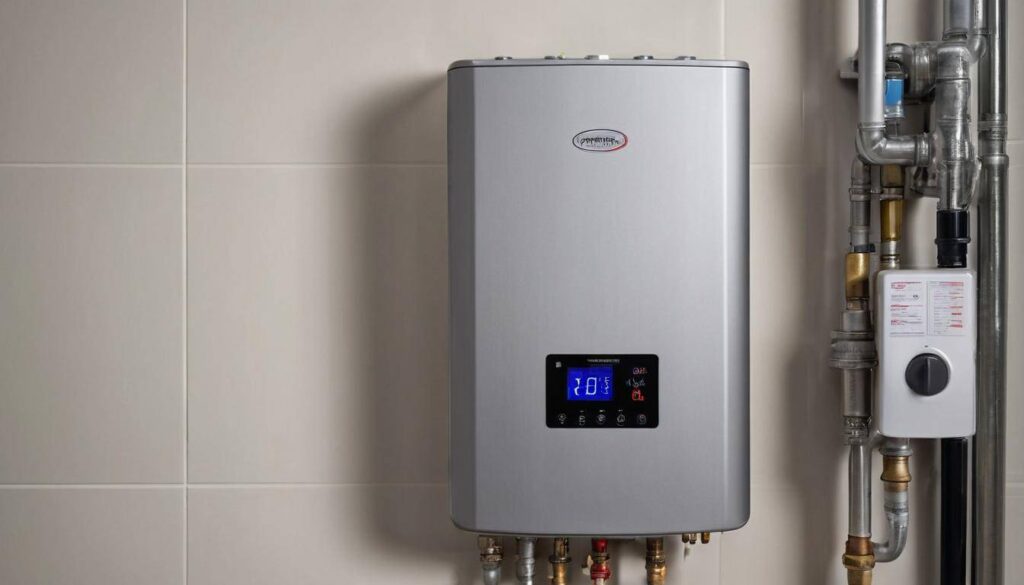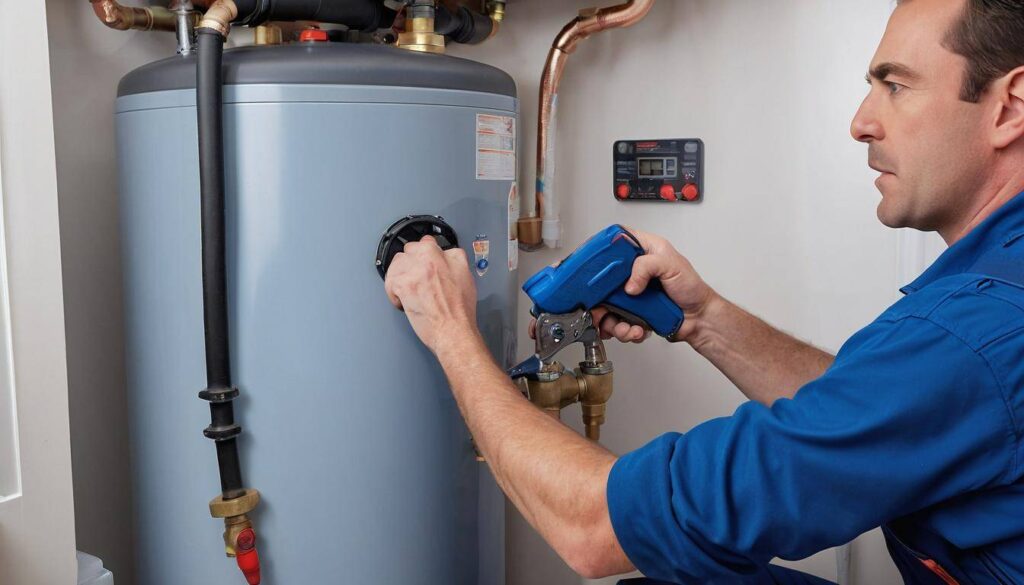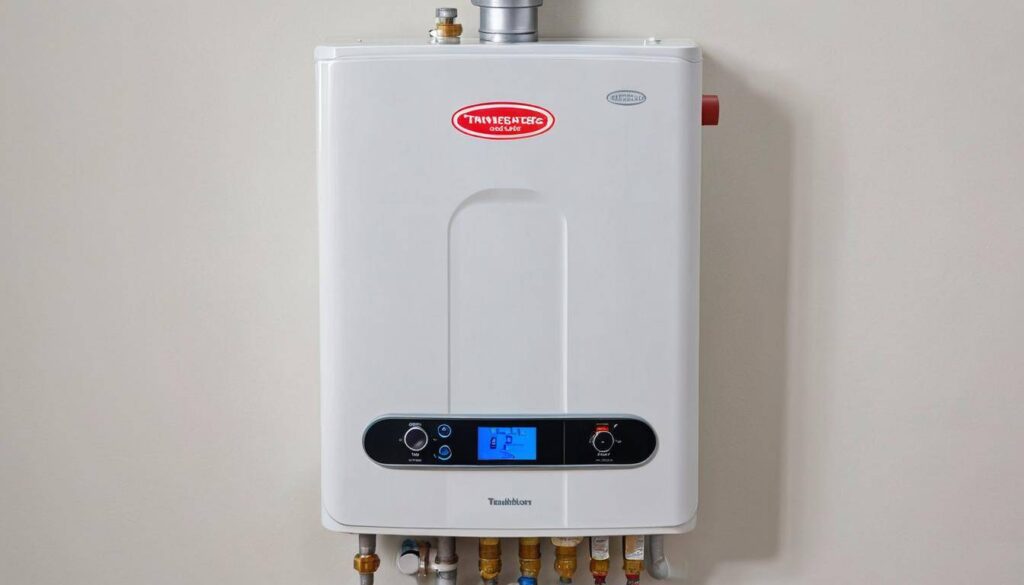How to Shut Off Water Supply in a Plumbing Emergency: A Step-by-Step Guide
Dealing with an unexpected home plumbing emergency requires fast and accurate action. The first and most important step is identifying the main water valve, typically located near your water meter. Picture a round wheel or lever, possibly inside the house if you’re in a chillier climate. This crucial detail isn’t common knowledge for all homeowners. Seek professional advice if the valve’s location remains a mystery. Next, let’s plunge into the specifics.
In a plumbing emergency, locate your home’s main water valve, typically found near the water meter or where the main water line enters your home. Turn the valve clockwise to shut off the water supply. Familiarize yourself with this process beforehand to be prepared for any potential emergencies.
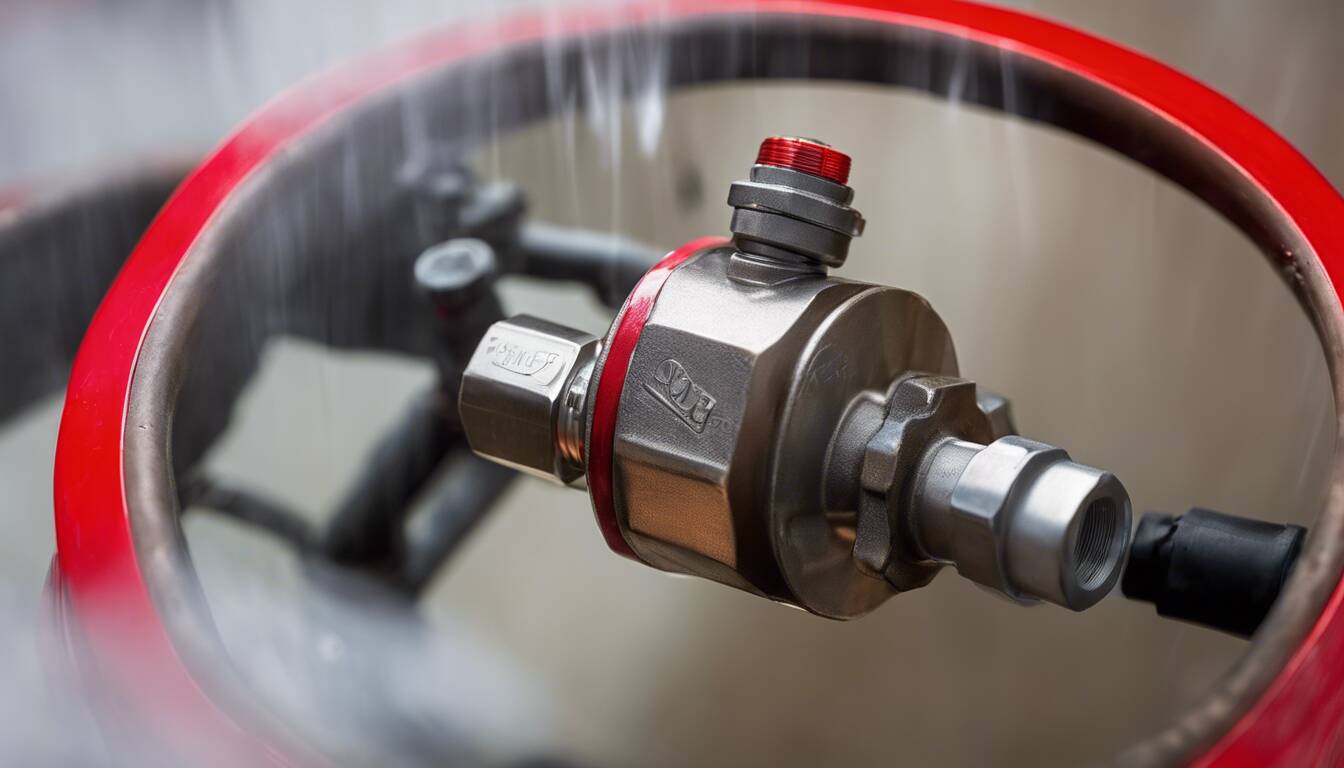
Identifying the Main Water Valve
In times of crisis, understanding the location and function of your main water valve is crucial. This valve acts as the master switchboard for your home’s water supply. Once it’s turned off, the flow of water to all the faucets and appliances in your home will cease. Therefore, in case of a plumbing emergency such as a burst pipe or a malfunctioning appliance, being able to quickly locate and shut off this valve can prevent extensive damage to your property.
The main water valve is typically situated near the water meter—a device that records the amount of water consumption in your home. The valve itself may be a round wheel or lever. It’s essential to know that in colder climates, it is often placed inside the house to shield it from freezing temperatures.
Importance of Familiarity
Now, imagine a situation where water is pouring out from under your sink or flooding your basement. In such an emergency, every second counts. This is why familiarizing yourself with the location of the main water valve is crucial.
This knowledge empowers you to act swiftly and decisively when faced with a plumbing disaster. Rather than frantically searching for the valve while water continues to gush out, you’ll be able to take immediate control of the situation by promptly turning off the main water supply.
Consider it like knowing where the fire extinguisher is in your home. If there was a fire, you wouldn’t want to waste time trying to find it – you’d want to grab it and put out the fire right away!
And just like how we periodically check our smoke detectors, it’s equally important to routinely verify whether our main water valve is accessible and functioning properly. This way, if an emergency were to arise, we would be fully prepared to mitigate any potential water damage.
A plumbing emergency can turn chaotic very quickly if you don’t know how and where to shut off the main water supply in your home. Therefore, taking the time to understand and locate your main water valve ahead of time can make all the difference during an unforeseen crisis.
With a clear understanding of the main water valve established, let’s now move on to exploring step-by-step procedures for shutting off the main house valve in different scenarios.
Procedures to Shut Off the Main House Valve
Locating the main house valve is one thing, but when it comes to emergency situations or maintenance work, it’s crucial to know how to operate it. Follow these simple steps to successfully shut off the main water supply to your entire Calgary house.
Step I – Locate the Valve
As mentioned earlier, the main house valve is commonly located near the water meter, typically made of brass or steel. However, in some cases, it may also be found in a utility area or basement. If you’re unsure, consult with a plumbing professional who can help pinpoint its location. It’s important to know this in advance so that you’re prepared for any unexpected plumbing issues.
Step II – Turn Off the Valve
Once you’ve located the main house valve, it’s time to turn it off. This action cuts off the water supply to the entire house, halting the flow of water to all fixtures and appliances. The valve will typically have a large round handle and should be turned clockwise (to the right) until it stops. Keep in mind that older valves may require a bit more effort to turn due to infrequent use, so be prepared for some resistance.
It’s essential to ensure that all household members are familiar with the location and operation of the main house valve. In moments of urgency, every second counts, and having multiple people who can quickly respond could make all the difference.
In stressful situations such as burst pipes or major leaks, being able to swiftly and confidently shut off the main water supply is invaluable. Practicing locating and operating the main house valve during calm periods will ensure that you’re fully prepared should a plumbing emergency arise.
Mastering this procedure equips you to swiftly and effectively shut off the main water supply in emergencies, reducing potential damage and keeping your home safe from water-related disasters.
Steps for Turning Off Locally Leaking Valves
When facing plumbing emergencies, the ability to promptly shut off water to the affected area can safeguard you and your home from potential disasters. If you notice a locally leaking valve, here are the steps you should follow:
Step I – Identify the Leaking Valve
First things first – locate the specific valve that’s causing the leak or malfunctioning. It could be under the sink, behind an appliance, or near a toilet. Identifying the source of the leak is crucial before proceeding to shut off the water supply.
In some cases, leaks can be quite obvious and require immediate attention, while other times, leaks might be subtle and take time to manifest visible damage. Keep an eye out for any signs of water pooling, dampness, or unusual sounds coming from your fixtures.
Step II – Turn Off the Local Valve
Once you’ve located the leaking valve, it’s time to take action. Turn the valve clockwise until it stops to shut off the water supply to that specific fixture or area experiencing the leak. This might be in the form of a knob or lever that you will need to turn or rotate.
For instance, if the leak is under your kitchen sink, look for the valves next to the hot and cold water pipes leading up to the faucet. Turning these valves clockwise will shut off water flow solely to that sink without affecting any other areas of your home.
Remember, haste and precision are key when dealing with a plumbing emergency. By swiftly turning off the local valve supplying water to the affected area, you can prevent further water damage and buy yourself valuable time until professional help arrives.
Understanding how to efficiently identify and turn off locally leaking valves is a proactive step in safeguarding your home from potential water-related havoc.
The Role of Timing in Responding to a Leak
When a pipe suddenly bursts or a valve leaks uncontrollably, every second counts. The longer water keeps flowing through a leak, the more potential it has to wreak havoc. Water, as vital as it is, becomes a destructive force under such circumstances. It seeps into walls, floors, and ceilings, leading to unsightly staining, structural damage, and mold growth. The urgency of swiftly shutting off the water supply is paramount in preventing these calamitous outcomes.
Imagine this: An unchecked leak can result in standing water, which can ruin your wooden floors or carpets. Left unaddressed, it can lead to mold growth within just 24 to 48 hours. In more severe cases, it can even compromise the structural integrity of your property.
For instance, a minor bathroom fixture leak might seem inconsequential at first glance, but over time it can cause significant damage to the surrounding tiles and subfloor—a cost that could have been avoided with prompt intervention.
Knowing how and when to act decisively during a plumbing emergency is crucial – because let’s face it, once water starts infiltrating your home where it shouldn’t be, the damage can compound rapidly. This underscores the necessity of familiarizing yourself with your home’s water shut-off valves ahead of time. It’s the small window between discovering a leak and stopping the flow of water that often determines how much damage will occur.
To put it simply: Time is of the essence when dealing with water leaks. The faster you shut off the source of the leak, the less likely you are to incur significant damages and costs down the line.
Safety Measures When Handling Plumbing Emergencies
When dealing with a plumbing emergency, your main concern should always be safety. Whether it’s a minor leak or a major burst pipe, wearing the right protective gear can shield you from potential injuries and contaminants. Essential items like safety goggles, gloves, and waterproof boots provide a vital layer of protection as you work to remedy the situation.
Protective Gear:
| Item | Usage |
|---|---|
| Safety Goggles | Shield your eyes from splashing water, sharp edges, and debris. |
| Gloves | Protect your hands from sharp or rough surfaces and potential contaminations. |
| Waterproof Boots | Keep your feet dry and protected from standing water and slipping hazards. |
In addition to these, ensuring that you have rubber-soled shoes is crucial, helping insulate you from potential electric shocks due to contact between water and electrical outlets or devices.
Using tools safely is critical in any plumbing emergency scenario. Rushing through the process may be tempting, but taking care to use tools properly can prevent accidents and further damage.
Using Tools Safely:
- Ensure tools are in good condition: Check for any signs of wear, rust, or damage.
- Exercise caution when using tools: Avoid applying excessive force or using tools in a way they weren’t designed for.
For instance, if you need to shut off a valve using a wrench or similar tool, applying excessive force may result in damaging the valve itself, leading to an uncontrollable leak. Therefore, taking the time to assess the condition of the valve and using the appropriate amount of force is crucial for a successful outcome.
When dealing with shut-off valves, it’s essential to remember that they can sometimes be challenging to operate. If you encounter resistance when turning the valve, do not force it. Instead, consider seeking professional assistance to avoid causing additional damage or making the situation worse.
By ensuring proper protective gear and exercising caution with tools, you can minimize risks and enhance your ability to address plumbing emergencies safely and effectively.
Now that we’ve covered how to handle plumbing emergencies with safety in mind, let’s pivot our focus towards preemptive actions to stave off future leaks.
Preventive Actions to Avoid Future Leaks
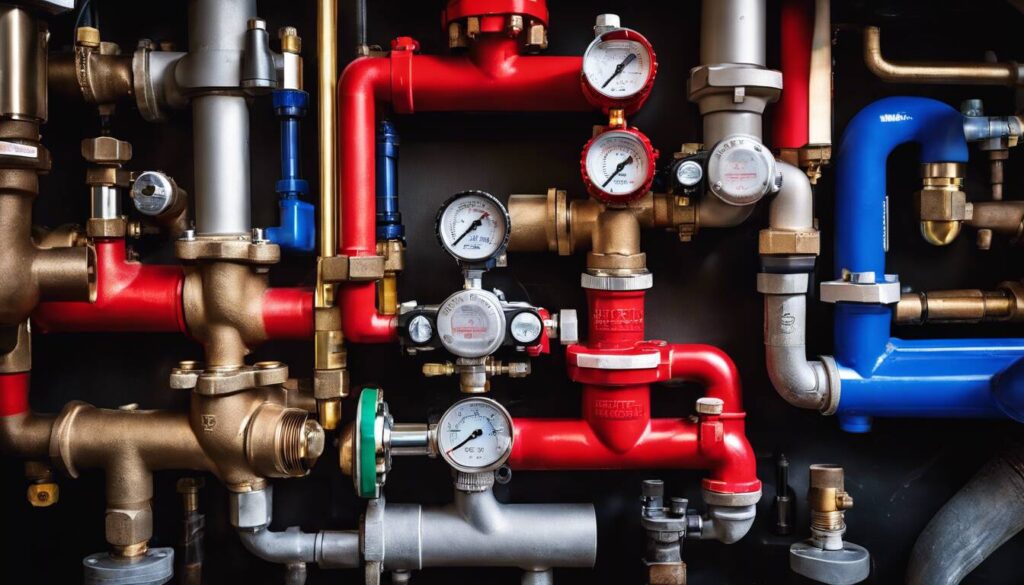 Preventive maintenance is essential to avoid costly and inconvenient plumbing issues down the line. Regularly inspecting plumbing fixtures such as faucets, showers, and pipes can identify potential problems before they become major issues. Look for signs of corrosion, rust, or moisture accumulation, as these could be early indicators of a developing leak.
Preventive maintenance is essential to avoid costly and inconvenient plumbing issues down the line. Regularly inspecting plumbing fixtures such as faucets, showers, and pipes can identify potential problems before they become major issues. Look for signs of corrosion, rust, or moisture accumulation, as these could be early indicators of a developing leak.
Another crucial aspect in preventing future leaks is to ensure your home is adequately heated during cold weather. When the temperature drops below freezing, water inside your pipes can freeze and expand, leading to burst pipes and subsequent leaks when it thaws. Maintaining a moderate home temperature can safeguard your plumbing system against this common winter hazard.
Addressing any signs of leaks promptly is equally important in keeping your plumbing system in top shape. Whether it’s a small drip from a faucet or a damp patch on the ceiling, addressing these issues immediately prevents them from worsening and causing extensive damage.
Consider creating an informative emergency preparedness guide that users can download from your website. This guide can educate them about preventive actions to take to avoid common plumbing problems in Calgary Alberta and surrounding areas. By offering this resource, you not only demonstrate your expertise and commitment to customer education but also establish your business as a go-to authority in the field of plumbing.
By regularly maintaining and inspecting your plumbing fixtures, ensuring adequate home heating in cold weather, and promptly addressing any signs of leaks, you’ll be taking significant steps towards preventing future plumbing mishaps—saving yourself time, money, and stress in the long run.
With these preventive measures in place, you’ll be well on your way to maintaining a secure and reliable plumbing system for years to come.

